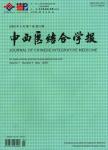Electroacupuncture activates AMPKa1 to improve learning and memory in the APP/PS1 mouse model of early Alzheimer's disease by regulating hippocampal mitochondrial dynamics
作者机构:College of Rehabilitation Medicine Fujian University of Traditional Chinese Medicine The Institute of Rehabilitation Industry Fujian University of Traditional Chinese Medicine National-Local Joint Engineering Research Center of Rehabilitation Medicine Technology Fujian University of Traditional Chinese Medicine Traditional Chinese Medicine Rehabilitation Research Center of State Administration of Traditional Chinese Medicine Fujian University of Traditional Chinese Medicine
出 版 物:《Journal of Integrative Medicine》 (结合医学学报(英文))
年 卷 期:2024年第05期
页 面:588-599页
核心收录:
学科分类:1005[医学-中医学] 100512[医学-针灸推拿学] 10[医学]
基 金:supported by the Fujian Provincial Outstanding Natural Science Foundation (No. 2021J06028) the key project at the central government level:the ability establishment of sustainable use for valuable Chinese Medicine Resources (No.2060302)
摘 要:Objective: Studies have shown that electroacupuncture(EA) can alleviate cognitive impairments from Alzheimer s disease(AD) by regulating the expression of adenosine monophosphate-activated protein kinase(AMPK), but the specific mechanism involved remains to be elucidated. Therefore, this study explores the potential mechanism by which EA improves cognitive function from the perspective of mitochondrial ***: The four-month-old transgenic mice with amyloid precursor protein(APP)/presenilin 1(PS1)and AMPKa1-subunit conditional knockout(AMPKa1-cKO) were used for experiments. To evaluate the effects of EA treatment on cognitive function, the T-maze and Morris water maze were used. In addition,chemical exchange saturation transfer, thioflavin staining, transmission electron microscopy, mitochondrial membrane potential, and Western blotting were used to examine the potential mechanisms underlying the effects of EA on APP/PS1 ***: Both APP/PS1 mice and AMPKa1-cKO mice exhibited dysfunction in mitochondrial dynamics accompanied by learning and memory impairment. Inactivation of the AMPK/peroxisome proliferatoractivated receptor-γ coactivator-1a(PGC-1a) pathway increased pathological amyloid-β(Aβ) deposition and aggravated the dysfunction in mitochondrial dynamics. In addition, EA rescued learning and memory deficits in APP/PS1 mice by activating the AMPK/PGC-1a pathway, specifically by reducing pathological Aβ deposition, normalizing energy metabolism, protecting the structure and function of mitochondria,increasing the levels of mitochondrial fusion proteins, and downregulating the expression of fission proteins. However, the therapeutic effect of EA on cognition in APP/PS1 mice was hindered by ***: The regulation of hippocampal mitochondrial dynamics and reduction in Aβ deposition via the AMPK/PGC-1a pathway are critical for the ability of EA to ameliorate cognitive impairment in APP/PS1 mice.



